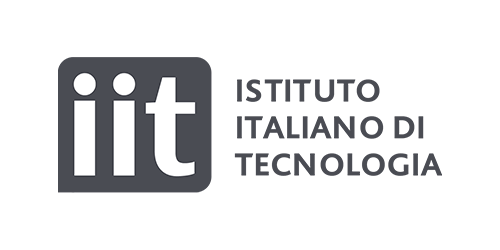FONDAZIONE ISTITUTO ITALIANO DI TECNOLOGIA
IIT staff is of more than 1600 people, the majority of which (about 81%) is dedicated to research, with a gender distribution of 42% women and 58% men and an average age of 35 years. About half of the researchers (47%) come from abroad: 33% are scientists from more than 50 foreign countries and 14% are Italian researchers who have come back to Italy after a professional experience abroad. IIT has a vast experience in managing and supervising research projects with a portfolio of more than 364 external funded research projects, 180 of which financed by EU funding programs as FP7 and H2020 – 25 are funded by European Research Council (ERC). IIT has produced more than 11270 publications and 245 inventions resulting in more than 690 active patents. Its research activity led to the creation of 18 spin-offs, with additional 30 under due diligence. Research is carried out in the Central Research laboratory in Genoa (IIT headquarters), in 11 research satellite centers across Italy and in 2 outstations in US. IIT scientific vision is interdisciplinary, based on the concept of “translating evolution into technology”, that is mimicking natural solutions to develop new technologies in the fields of robotics, materials science, and life science. Currently IIT is conducting its new scientific plan (2018-2023) developing four strategic research domains: Robotics, Nanomaterials, Technologies for Life Science, and Computational Sciences. The main goal is to produce technologies that will have a positive impact on some important societal challenges, such as sustainability and the environment, healthcare and aging society, also reflecting the priorities of EU framework programs. This approach promotes the creation of joint-labs and research agreements with industrial partners, universities, and international research centers.
Role in the project
IIT team IIT will coordinate COgITOR (WP1); will provide experimental support for the fabrication of self-healing skin, procurement and connection of μPV modules and take care of sensing technology (WP2), will provide the custom chips for tomographic MIS (WP3); will take care of the sensing lab test bench and sensing CCS characterization (WP2); will provide the thermomagnetic energy harvesting technology (WP4), will integrate all subsystems and take care of the integrated testing and the realization of final EE characterizations (WP5), will participate to communication, dissemination and exploitation activities (WP6). Basically, both sensing and harvesting liquid technologies are already among IIT’s assets; nevertheless to tackle integration in WP5, IIT is involved heavily in the proposal, with slightly less than 40% of the PMs (of which, 34% are on WP5).








